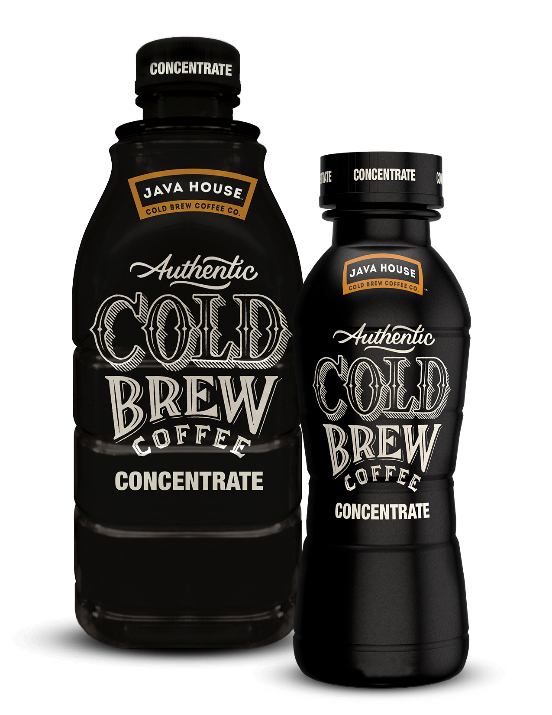Heartland Food Products Group, the Carmel, Ind.-based maker and owner of Splenda brand products since 2015, has released a line of commercial cold brew concentrate under the name Java House.
The 4:1-ratio concentrate is available to foodservice operators in 10-ounce bottles the company suggests can be diluted into six 16-ounce services, and 32-ounce bottles, dilutable into 20 servings. The line includes a base “Colombian Black” flavor and several flavored “Frappe” editions. The company is also offering private-label services for the packaged cold brew, which Heartland says has a 12-month shelf life in ambient conditions.
Coffee sourced for the line is 100-percent arabica the company states is locally air-roasted in small batches locally by what it describes as “an outstanding specialty coffee roaster,” although the name of the roaster has not been disclosed. The cold brewing method is of the extended immersion sort, involving a minimum 18-hour steep.
“Our belief is if we’re going to do the amount of work to get our cold brew perfect, then we’d like to share it with as many people as we can,” Ted Gelov, chairman and CEO at Heartland Food Products Group, said in an announcement of the product launch. “With our authentic cold brew concentrate, we’re making it easy for foodservice operators and restaurants around the country to serve high quality cold brew with a smooth feel and consistent rich taste to their customers at an affordable price.”
Nick Brown
Nick Brown is the editor of Daily Coffee News by Roast Magazine.
Comment
3 Comments
Comments are closed.







oh brother….another one…
The company should publish at what temperature this “cold brewed” coffee was steeped/brewed at? Was room temp 72F or maybe it 115F that is room temp in Thailand??
Also how hot is the Cold Brewed Concentrate heat to for aseptic packaging? Somewhere between 195F and 295F? How does this heat impact the authentic cold brewed flavor??
It absolutely does affect the flavor. Hot-filling and adding preservatives are tried and true methods for copackers to address the needs of an extended, non-refrigerated distribution network. It does not necessarily need to be brewed “cold” but if the concentrate is hot-filled, the result is a bitter, oxidized product that is missing cold brew’s signature smooth, subtle sweetness.